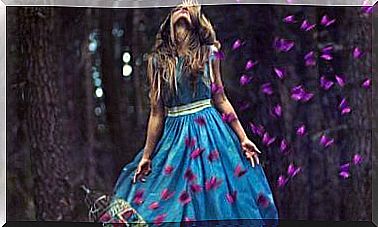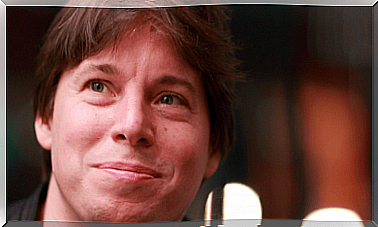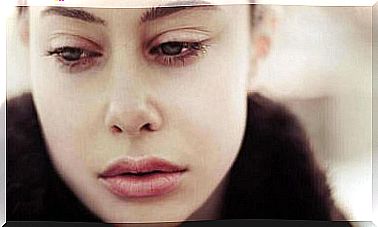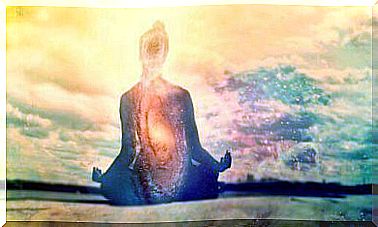Mulholland Drive: A Labyrinth Of Light And Shadow
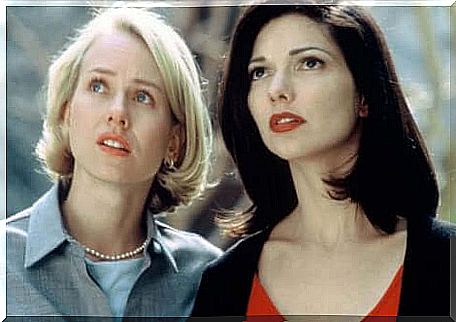
Mulholland Drive (2001) is one of the best-known films by Twin Peaks creator David Lynch. Like almost all of his works, it is a film that leaves no one indifferent. He continues to arouse as much admiration as dismay.
The passage of time has given it the title of one of the best films of the present century. However, that does not mean that we can speak of unanimous praise.
Making a synopsis is a bit tricky due to the very structure of the film . However, one could say that it all begins when a young woman doubly survives death. As she was about to be killed while driving her car, the threatening vehicle crashes, allowing her to survive.
In his bag, there is only money and a small blue key. But nothing that seems to give a clue to his identity. After the accident, she loses her memory and hides in a house that does not belong to her.
The other main character, Betty, is an aspiring actress to whom her aunt has loaned her home in Los Angeles. Arriving at what will be her new home, she meets the young woman who has been injured. She will take the name of Rita.
From this moment, the adventure of discovering who Rita really is begins. We will descend into the hidden passions of the protagonists and end up witnessing a seemingly inconsistent spectacle. From the initial thriller, we move on to a kind of absolute darkness and a descent into hell. Everything is a game of appearances and symbols that we are going to try to decipher.
Mulholland Drive was going to be a series, but the producers were so shocked by the pilot episode that they were forced to make it into a feature film.
Maybe the problem is trying to see it from a linear point of view. We try to reach the final explanation and understand the film as a whole. Perhaps we should instead let ourselves be carried away by the emotions and sensations that its viewing elicits.
Why do we feel the need to have all of this explained to us? In this article, we won’t try to give an explanation for the movie, but we will cover some of the keys.
Why explain Mulholland Drive ?
Mulholland Drive is a real maze. This film appeals to the dreamlike. So much so that we can relate it to the very structure of our dreams. Over the years we have tried to find an explanation, and while it seems that some arguments carry more weight than others, the truth is that Lynch himself has said that he prefers not to give explanation to the film.
In an age where we’re used to too much information, seeing a movie like Mulholland Drive is revitalizing. A film which allows the spectator to give an answer to what has just happened before his eyes.
Art shouldn’t always be seen as something that can be explained in words. Quite often it can involve us on another level and simply arouse a certain emotion in us.
Let us think for a moment of certain paintings or even of music or poetry. They don’t always have a clear message and we don’t always care. We just revel in and let our emotions take over. Cinema can also create such sensations and it should not be seen as pure entertainment.
However, the mere fact that Mulholland Drive makes us ask endless questions and immerses us in various discussions with those around us, is already a path to entertainment.
Lynch’s filmography generally points to the dreamlike. In this sense, we can look at the film in this way. When we dream, the images and stories that appear in our mind are not connected. Yet, while we are dreaming, they seem to make sense.
But when we wake up, if we try to explain to someone what we dreamed of, it is difficult for us to do it and manage to structure the dream with words.
An illusion
When we dream, the people who appear in our dreams are people we have seen before. We may not remember them. We can also assign them roles that are different from the ones they play in reality.
Likewise, spaces in dreams can be very different from reality. We can even do unthinkable things. So if we try to draw parallels between Mulholland Drive and dreams, we find a theory that seems to hold its own. Plus, the film has a lot of symbolism and we even get to see an absolutely revealing place: Club Silencio.
The Club Silencio scene is one of the most hypnotic in the film and, at the same time, it marks a before and an after. If until now it seemed like we were watching one story – or several – but with a more or less linear structure, after attending the club we find ourselves in front of what appears to be a new movie.
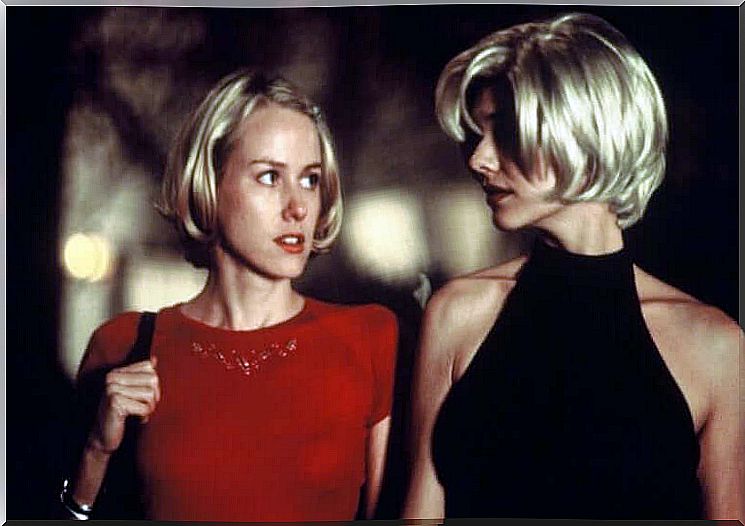
This strange place acts a bit like the Magic Theater of the Steppe Wolf , Hermann Hesse’s hermetic play. A meeting place, where nothing will ever be the same again, and which perhaps holds the key to the protagonist’s reality.
Indeed, blue tones predominate in this space and seem to evoke a certain duality that we will soon discover in the protagonist. The color blue alludes to the mind and also to introspection. We saw this color in Rita’s key and now we also see it in the box Betty keeps.
Thus, the key will open the box giving birth to a new reality, a succession of stories that now seem to fit together. Everything that we had seen before takes on a new meaning, we are witnessing a clear blossoming of the personality and, thanks to Club Silencio, we find that we have been deceived. Everything we saw was an illusion, a lie, like the art, the dreams, and the movie itself.
The club’s magician seems to be talking to the protagonists. Yet he also seems to speak to us as spectators, waking us up from the dream Lynch put before our eyes.
From a detective-style first part, we move on to a darker second part, with a twist that is both disconcerting and revealing. From the optimism of a young Betty who seems to be living the American dream, we move on to Diane’s decadence and instability, to the duality that seems to take over the protagonist.
Despite all its virtues and successes, we still find critics who are unable to fully digest it. Some even suggest that it is overrated. Maybe it is. However, the actresses’ play was particularly praised. It is also the film that launched the career of Naomi Watts that we see here shine and fade in a masterly way.
We cannot deny that Mulholland Drive is a real puzzle whose final resolution is quite subjective, an exercise for the spectator who will try to dialogue with the film. In short, it is an invitation to our mind, an illusory puzzle, not free from passions and deceptions.

